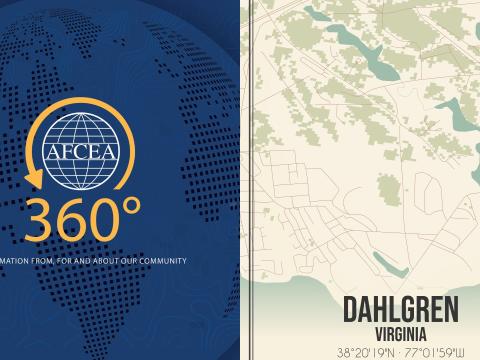U.S. Pacific Fleet Commander Calls To 'Embrace the Red'
In an effort to strengthen operations today and into the future, the U.S. Navy is moving forward with Project 33, an integral part of the navigation plan published by Chief of Naval Operations (CNO) Lisa M. Franchetti in September 2024. Industry players are key to ensuring operation success, however.
Speaking on the initiative’s progress was Adm. Stephen "Web" Koehler, commander for the U.S. Pacific Fleet, USN, whose keynote address kicked off the annual WEST conference in San Diego on January 28.
"Let's take a holistic, innovative approach that brings transformative, strategic gain to our force," Koehler told industry members. "That includes considering things we're not doing that we should be doing. It includes embracing the red, which is Navy speak for embracing problems and adjusting quickly and holistically to fix them."
Project 33, Koehler stated, sets targets for strategically meaningful gains by leveraging existing resources at a rapid pace. “One of those seven targets is scaling and integrating robotic and autonomous systems across the fleet by 2027,” he said.
While the service has already begun these efforts, the CNO’s goal is to scale and integrate autonomous systems across all domains. “This vision will not replace our legacy capabilities; it will enhance them,” Koehler continued.
As an example of continuous progress, the admiral referred to the first-ever at-sea refueling test successfully demonstrated in December 2024 by the Defense Advanced Research Projects Agency’s No Manning Required Ship program. “That is revolutionary advancements for the fleet,” he said.
Koehler also noted a new enlisted rating established across the Navy and Pacific Fleet titled “Robotics Warfare Specialist.” Additionally, unmanned surface vessels squadrons and unmanned undersea vehicle squadrons have been created to complement the existing unmanned air squadrons.
“We have ramped up our experimentation efforts to get more robotic systems into operational settings in the next few years,” Koehler stated.
Speaking on the Defense Innovation Unit’s Replicator Initiative success, Koehler told audience members that Replicator 1 is “already fielding all-domain, attritable, cost-effective, autonomous systems,” which include unmanned surface vessels, unmanned aerial systems and counter unmanned aerial systems in “various sizes and payloads, as well as loitering munitions.”
The Replicator 2 initiative, which was announced in September 2024 by former Secretary of Defense Lloyd Austin, looks to counter-small unmanned aerial systems, also referred to as C-sUAS. “Replicator 2 is addressing the autonomous system threat to our installations and force concentrations overall,” Koehler said.
The USN Pacific Fleet is also working on upgrading its command-and-control systems and processes, he added. Within its warfighting ecosystem, the Pacific Fleet headquarters will fight from its Maritime Operations Center, also known as the MOC.
“The MOC concept is key to our fleet-level command and control and distributed maritime operations. It empowers our headquarters to stand up as a joint task force when directed and command joint forces in a highly contested combat environment,” Koehler stated.
Project 33, he noted, will make the MOC the fleet standard by 2027, and industry partners are key to ensuring the success of this effort.
In his closing message to conference attendees, Koehler spoke on his mission to leverage America’s innovation.
“As a demanding operator, I want it all. I want speed. I want persistence. I want capability designed and built to enable operations inside weapons engagement zones; and in 2025, I want to take our partnership with industry—with you—to even greater heights.”
WEST is co-hosted by AFCEA International and the U.S. Naval Institute. SIGNAL Media is the official media of AFCEA International.



Comments